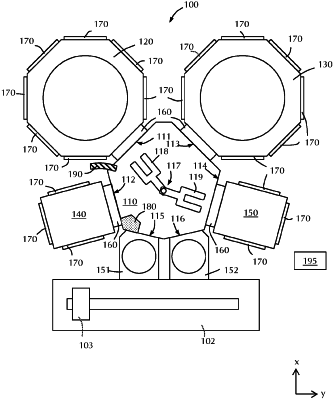| CPC C23C 16/45553 (2013.01) [C23C 16/403 (2013.01); C23C 16/4554 (2013.01); C23C 16/45548 (2013.01); H01L 21/02178 (2013.01); H01L 21/0228 (2013.01); H01L 21/0234 (2013.01)] | 7 Claims |

|
1. A method comprising:
forming an aluminum oxide film on a substrate surface by ALD using water as an oxidant; and
exposing the aluminum oxide film to a decoupled plasma consisting essentially of He, to lower the wet etch rate of the aluminum oxide film to less than 50 Å/min,
wherein the decoupled plasma is a remote directional plasma, the remote directional plasma formed in a plasma assembly having a slot with edges through which the plasma flows, the plasma having a high ion energy and concentration adjacent the edges of the slot.
|